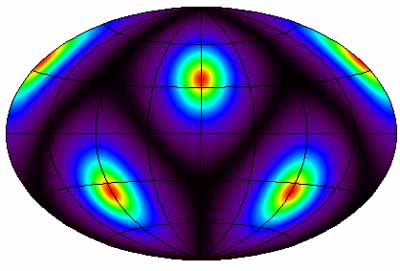
The thermal evolution of the Earth is influenced by the way heat is transported from the interior to the surface. Heat can be transported by conduction and/or convection. The conductive heat transport dominates in the lithosphere, whereas convective heat transport usually dominates in the mantle and the core.
Thermal convection occurs due to density changes of the material caused by temperature variations: heated material rises towards the surface because of its reduced density relative to the density of the surrounding material and cooled material sinks toward the centre because of its increased density. This convective heat transport is more efficient than the conductive heat transport and as long as the Earth is sufficiently hot inside and cool outside, a global-scale circulation of the interior can be sustained. In addition to thermal convection also chemical convection can take place in the Earth. Chemical convection is caused by density variations due to compositional differences: dense material sinks and light material rises.
It should be noted that, although solar irradiation can be orders of magnitude bigger than internal heat, it has no effects on deep internal dynamics. Solar irradiation indeed penetrates less than a few hundred meters and only drives processes close to the surface.
The Earth's mantle consists of rock, which can be partially molten in small regions, but the vast majority of the mantle material is solid. In response to short-term (~ 1s) force, e.g. seismic waves, the mantle behaves like an elastic solid body. However, in geological time scales (~100 Ma) the rock behaves like a viscous fluid and allows the global-scale circulation. These interior movements can leave behind some fingerprints on the surface, for instance in the form of tectonic structures likes faults and mountains, horizontal plate movements or volcanoes.
Thermal convection in the Earth is driven by internal heat sources. This heat stems from accretion, the decay of radioactive elements, tidal dissipation, and the gravitational energy, which is released during the differentiation into core, mantle, and crust.
Thermal and chemical convection provides a framework to reconcile observations of planetary magnetic and gravity fields, surface heat flow, distribution of volcanoes and tectonic structures.

